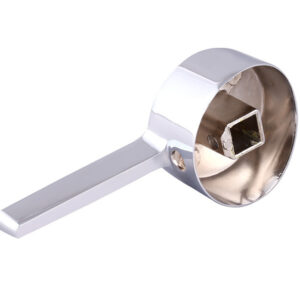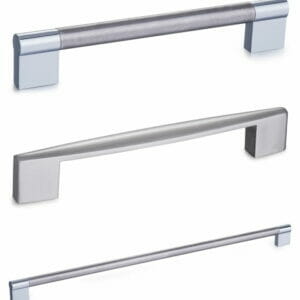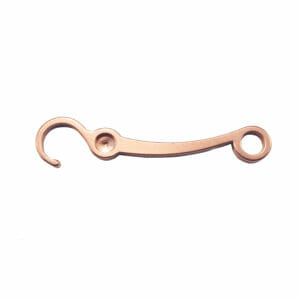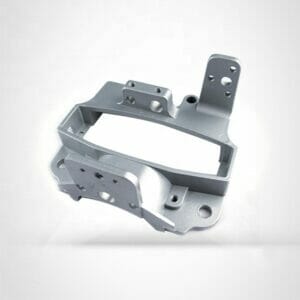Now, you can understand why everyone is talking about the Zamak alloys. The quest to develop a better alloy for making different products led to the discovery of the Zamak alloys. These are unique alloys that combine different raw metals like zinc, aluminum, copper, and magnesium.
They are a hybrid of alloys bringing the benefits of all the metal elements combined to form them. However, there is another unique feature. Zamak alloys contain 5% aluminum, making them unique and best for the die casting process.
Zinc alloys also contribute to the Zamak die casting process because it is easy to work with and tough. Overall, the parts made using the Zamak die casting processes have outstanding physical and mechanical properties after the hot chamber die casting process.
How Zamak Die Casting Works
Many production engineers will choose Zamak die casting production because the process can save time and resources. Zamak die casting involves using Zamak alloys which are easy to melt and modify into different parts. The Zamak alloys transform into a molten form under heat during the hot chamber die casting process. After conversion, the production engineers pour the molten alloy into a mold cavity.
In the mold cavity, the molten alloys take the desired form, and the part is formed after cooling. These parts have impressively long-term dimensional stability and many other features.
Is Zamak Die Casting Foolproof?
When experienced production engineers handle the process, we can guarantee the best Zamak chamber die casting results. The main idea is that the production should be done at a low melting temperature, and the die-casting machine settings must be perfect.
However, there are some things to note about the die casting process. The first is that using a cold chamber die casting method may not yield the best results. Also, the production engineers must closely monitor the temperature during die casting. Temperature checks are essential because the alloy can be compromised if the temperature is too low.
Also, there should be no trace of lead or tin when combining the alloys for zamak. The unwanted alloys can make the product prone to corrosion.
Regardless of all these drawbacks, you have no worries about the product’s efficiency when you buy Zamak die casting parts from our company. Aikehan has a fully groomed and experienced team of production engineers trained to avoid the mistakes that can ruin the final products made through Zamak die casting.
We have been in the business for many years and have established long-term relationships with reputable suppliers of raw materials like zinc, aluminum, and other materials.
Advantages of Zamak Die Casting
The combination of aluminum, magnesium, and other zinc alloys, yields an excellent balance that makes the final products among the best on the market. There is a massive demand for products made of Zamak die casting.
Here are some of the main benefits:
Impressive Corrosion Resistance
The parts made from Zamak alloys are guaranteed to withstand corrosion, whether you install them outdoors. For example, we design the best door handles from these Zamak alloys, which stand the test of time against corrosion. We are happy the products turn out perfect because corrosion resistance is one of the main factors buyers consider before making a purchase.
Excellent Thermal Conductivity
Zinc die casting is excellent, but the products made through Zamak die casting yield parts that have a significant thermal conductivity. This makes them a good option for use indoors and outdoors.
Low Melting Point
There is a high demand for Zamak die casting products because they tend to last longer than products of aluminium die casting or using a zinc alloy for a project. Zamak alloys last longer because of their low melting point.
Overall, working with the zamak alloys is easier because they are more durable and stronger. That is why projects involving making parts with thinner walls are best done with Zamak alloys.
There is a high demand for these parts in several industries, including automobile manufacturers, household electrical fittings industry, and manufacturers of cable terminals.
Heat Treatment
Making parts through Zamak die casting will require some heat. The heat treatment is done to help improve the alloy’s features like ductile strength, durability, toughness, and corrosion resistance. The final parts yield strength and can be used in different ways, including making door handles.
Therefore, heat treatment is essential to avoid several deficiencies during the Zamak die casting process. For example, you will have no worries about cracks on the parts, blow holes, or blisters on the finished surface.
Product Description – Zamak Die Casting
Here is a breakdown of what the finished products will feel like and how they perform:
Product Material
These alloys are made from Zamak 3, zamak 5, and make 7. The choice of material depends on the project brief. For example, any of the elements are used when making door handles for a home.
Surface Finishing
Zamak die casting products are finished by doing a perfect chrome plating over the product’s surface. This finishing has consistently helped make these parts sell faster on the market.
Product Standard
The product standard is usually according to the client’s product brief. For example, some projects require the final parts to be of standards like DIN, GB, ISO, JIS, BA, or ANSI. Also, the parts fall under the AKH grade level.
Contact us to Order Zamak Casting Parts Today
Send us your customer contact form to allow us to reach you to provide more guidance on ordering any of these products.




